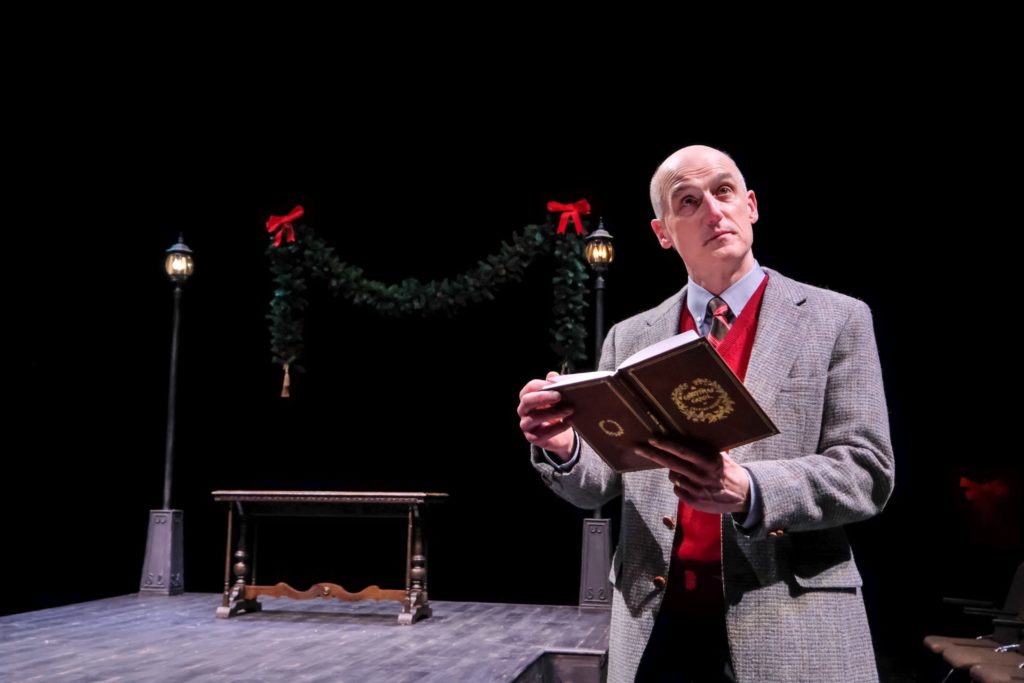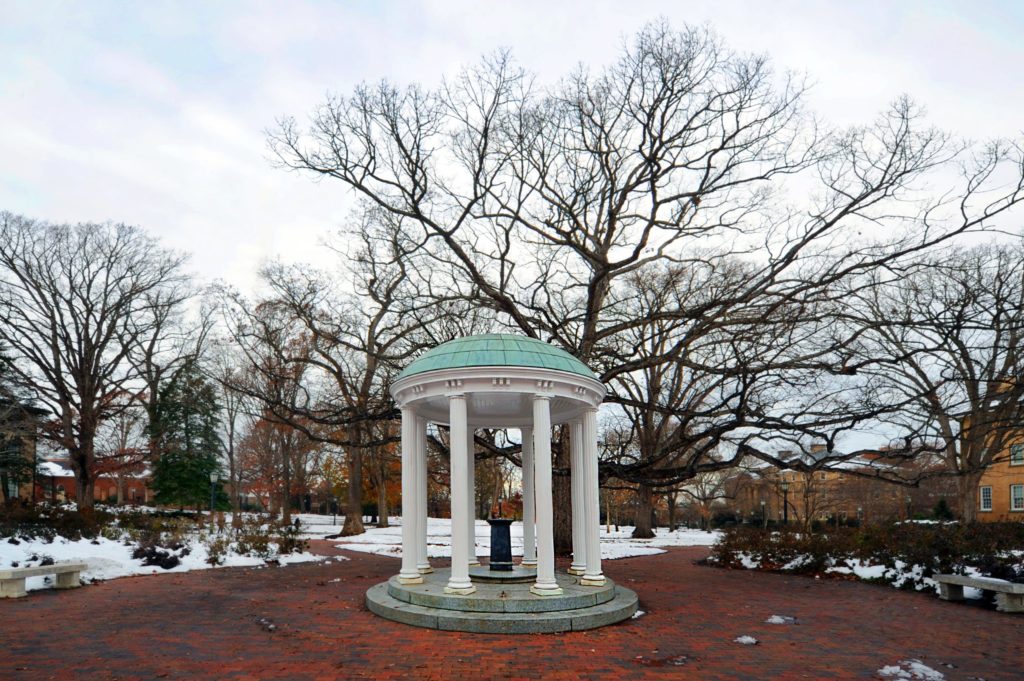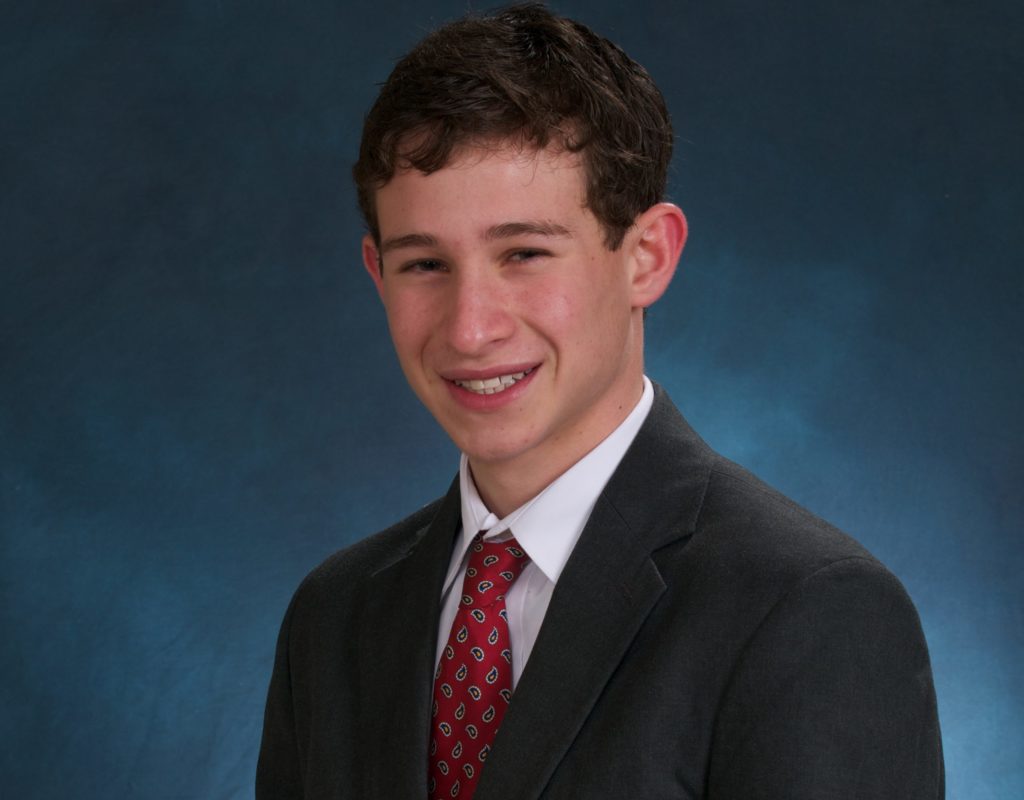After Hurricane Maria swept across Puerto Rico in 2017, millions of people lost power — some for nearly a year. But the blackout wasn’t just the work of a powerful hurricane. Decades of debt, economic dependence, and bad financial deals set up the territory and its electrical company, PREPA, for failure. To get to the root of the catastrophe, UNC anthropologist Sandy Smith-Nonini and filmmaker Roque Nonini teamed up to create a documentary about the underlying forces of Puerto Rico’s energy crisis.
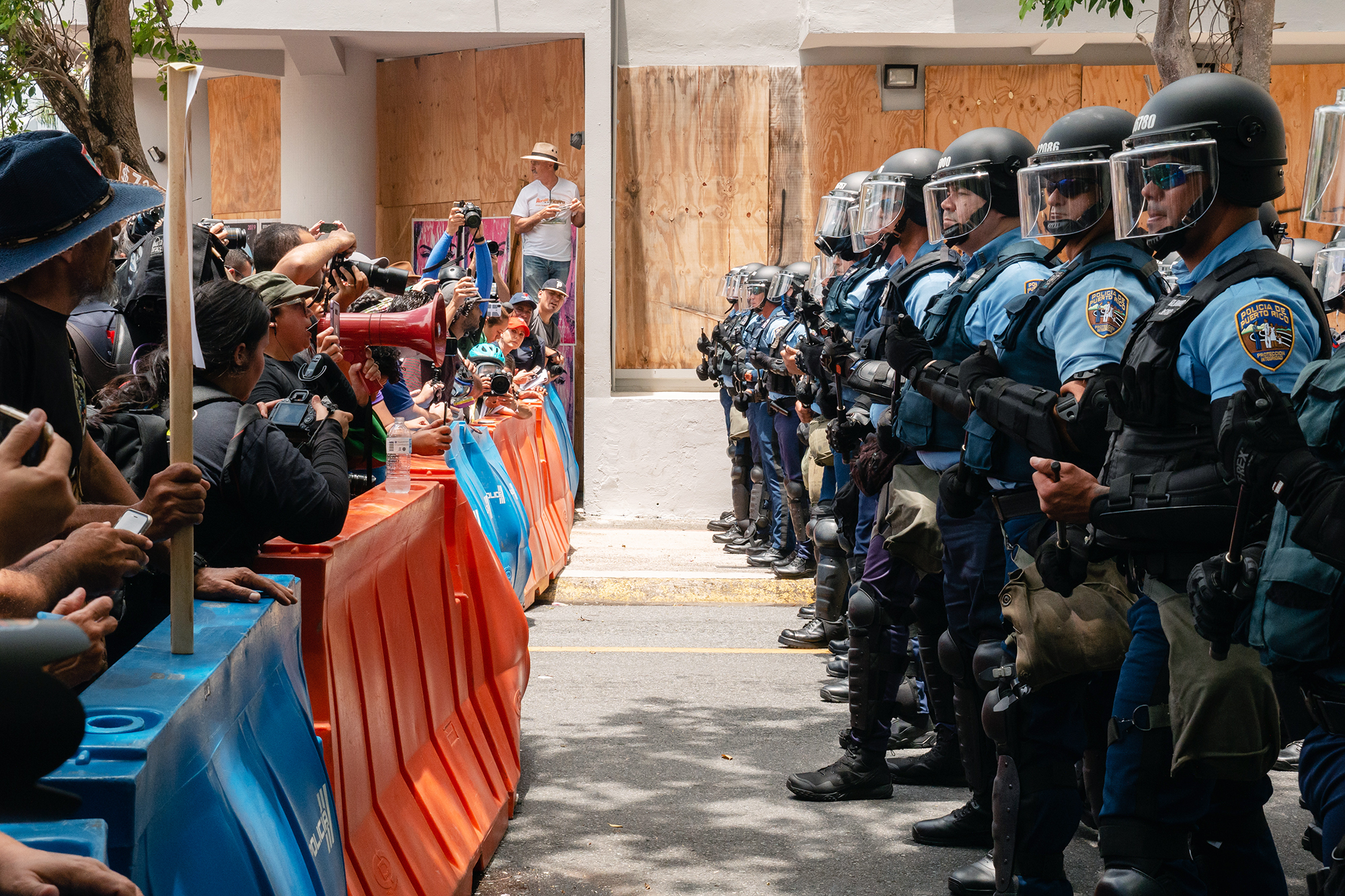
It was a hot day in San Juan, Puerto Rico, and Sandy Smith-Nonini was watching her son, filmmaker Roque Nonini, as he filmed one of the march routes for the 2019 May Day demonstrations.
She was on high alert for any signs of trouble. During last year’s May Day, demonstrators were tear-gassed and arrested while protesting the government’s response to the ongoing economic crisis. Sandy, a UNC anthropologist, expected similar reactions this year.
“It’s one of the days where there tends to be the most public manifestation of people’s anger over everything,” she says.
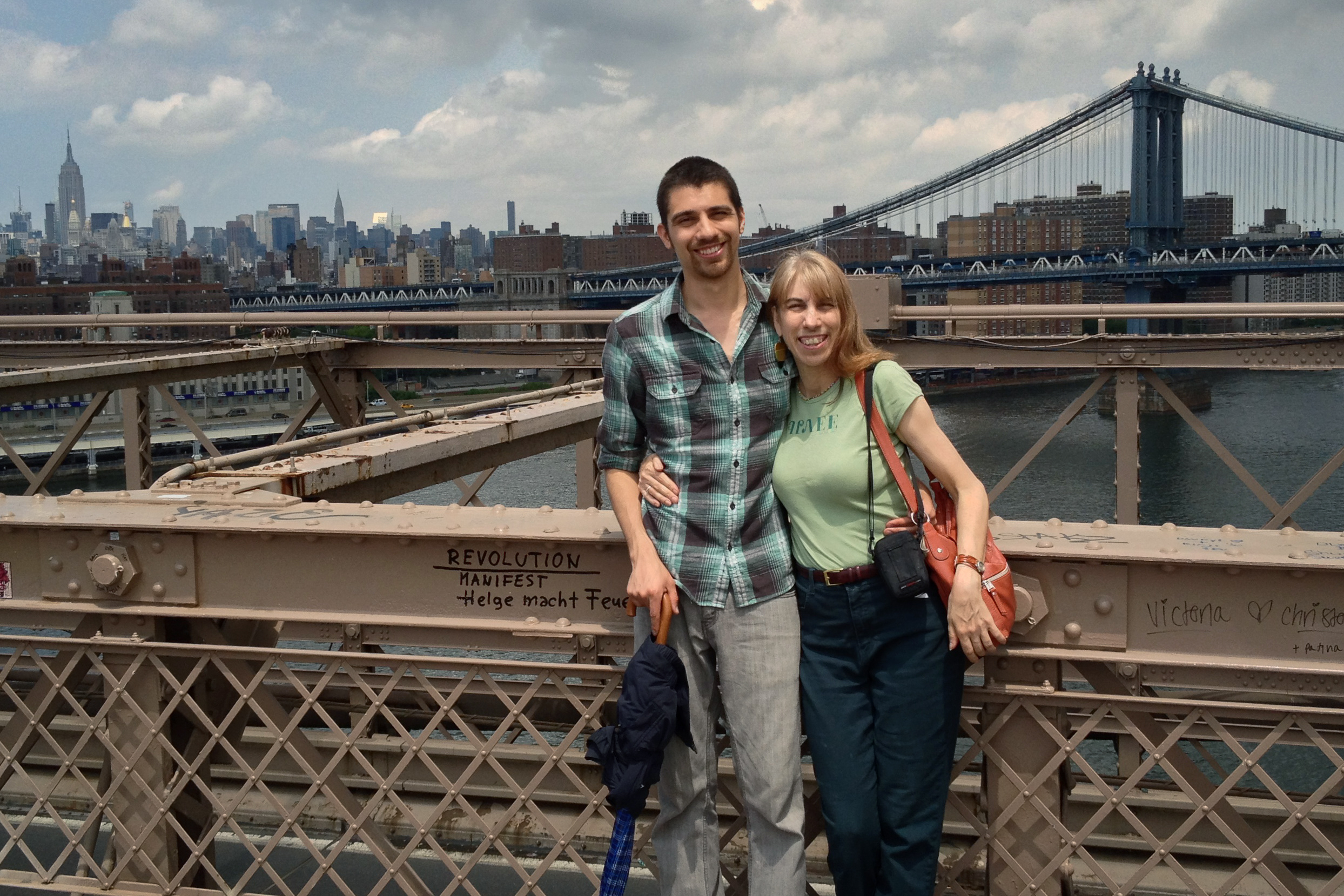
People held wooden shields and handwritten signs in Spanish. “Se acabaron las promesas,” one said: The promises are over. Puerto Rican flags, many black and white to symbolize mourning over the island’s plight, fluttered above the crowd. There was music, singing — a squeeze of humanity as Sandy neared the junction where electrical union demonstrators collided with university protesters. She was anticipating a clash with police where the march’s two routes joined together.
For a year and a half after Hurricane Maria hit Puerto Rico, she and Roque had researched the causes of the blackout and spent weeks in San Juan and the surrounding area. What they found was a precarious electrical grid based on a muddled web of economic dependence, growing debt, and politics rooted in colonialism. The collapse of the energy grid in the wake of Maria resulted in the largest blackout in American history, and the second-largest worldwide.
Together, they’ve compiled the story of this crisis into a documentary called “DisemPOWERed: Puerto Rico’s Perfect Storm.”
But for many of the people in the streets, this was personal. A federal oversight board had implemented austerity measures to deal with the island’s debt problem, cutting funding to pensions, health care, and education. Police stood in an unmoving black and blue line as protestors drummed on the street barriers and took videos on their phones.
In the middle of this, Sandy was looking for Roque — plus planning an escape route in case of tear gas — and stumbled over uneven pavement and went down hard over a curb. Although she didn’t know it at the time, she had broken her foot. Around her, the protest swept on.
“I was due to travel to Greece in two weeks,” she laughs, two months later, eyeing her crutches and clunky boot. She had been studying the European country’s relationship with energy and debt extensively before something else had caught and held her attention— the lights had gone out in Puerto Rico. And they hadn’t come back on.

A human-made disaster
On the morning of September 20, 2017, Hurricane Maria slammed into Puerto Rico’s southeastern coast just below the threshold of a Category 5 storm. As the hurricane passed over the island, sustaining maximum wind speeds of 155 miles per hour, wind ripped apart palm trees and buildings. Streets turned into rivers. Power plants were damaged and power lines fell into dangerous tangles of metal and cables.
By the next day, almost everyone on the island — nearly 3.5 million people — was without power.
Some had generators, but they were loud and expensive to maintain. Food and medicine like insulin spoiled in warm refrigerators.
“In a developed place, we take our energy for granted,” Sandy says. “Nothing worked. No ATMs. Initially the gas stations weren’t working, the water wasn’t working.”
A former journalist, Sandy studies political ecology and the relationship between energy and inequality in capitalist societies. When Hurricane Maria hit Puerto Rico, she was blown away by coverage of the devastation and knew that this was a time to use her expertise and investigate the situation.
She read everything she could about the island. She followed the news. Meanwhile, the days and weeks Puerto Ricans were without power stretched on. But between political waffling and fine print, finding out why was difficult. In academia, studies about the American territory were relatively scarce.
“One of the things I’ve learned is that it kind of gets left out of the academic world, because it’s neither Latin American Studies nor American Studies,” she says. “For most people, it sort of falls in the cracks. And so the literature isn’t what you’d like it to be when you go searching.”
A few weeks after the storm, she pitched the idea of a documentary to Roque, who holds a BFA in film and television production. He had never done this style of filmmaking before, but was experienced in telling stories through videography and photography.
“My initial thinking was to maybe do a 20- or 30-minute film. And as we got into it, the complexity of it was obvious,” Roque says. “So it kind of ballooned.”
And balloon it did — the final film is 52 minutes long. Little by little, the film lays out a story of industry built on dependency, the electrical company’s relationship with oil companies and American banks, and how, in the end, it popped.
The effect? Sandy and Roque confirmed that the aftermath of Maria was the consequence of a human-made disaster — not just a natural one.
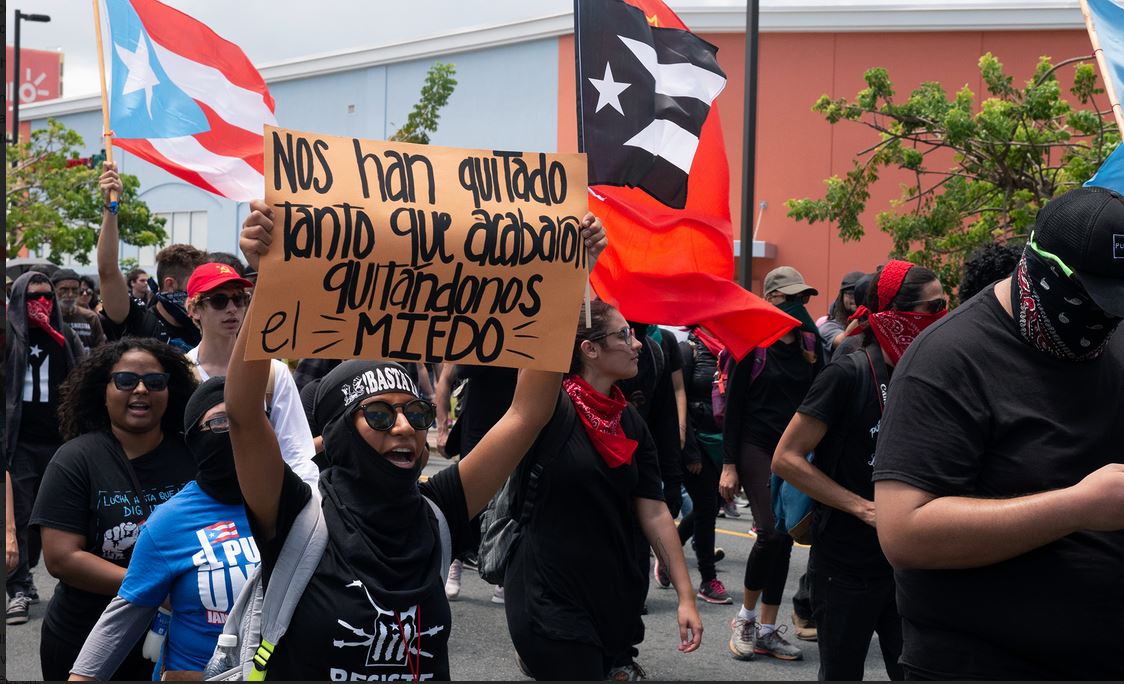
Cause and effect
For months, the mother-and-son team researched scandals, deals, and money trails of loans and misused funds.
“I had a lot to learn,” Sandy says. “I knew there was a colonial history, but I’m like most Americans — up until the storm, Puerto Rico was not something I spent a lot of time cogitating on.”
Puerto Rico has belonged to the United States since the end of the Spanish-American War in 1898, but its people can’t vote for president and lack voting representatives in Congress.
After World War II, the island’s government introduced an economic strategy called Operation Bootstrap to boost the economy. It set up incentives like low-cost labor and tax breaks to pull industrial investment to Puerto Rico. Although the economy flourished and living conditions improved, the industries on the island weren’t Puerto Rican — they came from the American mainland. By the time the incentives were phased out in the early 2000s, those businesses fled and the economy went into freefall. Puerto Rico is now more than $70 billion in debt and in its 13th year of recession. But as a territory, it could not declare bankruptcy.
The Jones Act, a century-old federal law, requires Puerto Rico to pay a penalty for any imported goods that do not come in on ships built, owned, and operated by Americans. It costs twice as much to import goods to Puerto Rico than to neighboring Caribbean islands. To aid post-Maria relief efforts, the Trump Administration waived the Jones Act for 10 days.
About $9 billion of that debt belongs to the government-owned Puerto Rico Electric Power Authority (PREPA), which has faced steadily worsening financial woes over the years due to the recession and an unsustainable reliance on foreign oil. PREPA took out loans to keep the lights on, and American banks were more than happy to capitalize off of Puerto Rico’s tax-exempt bonds, in spite of the utility’s bankrupt status. Instead of improving capital and performing regular maintenance, the money was spent on oil and debt payments.
“Assessing PREPA’s borrowing and lending required wading into a quagmire of fine print,” Sandy says.
Transmission lines crossed the island’s mountains from generation plants in the south to areas of high demand around San Juan in the north, making an island in the middle of Hurricane Alley even more vulnerable. By the time Maria was developing off the African coast, Puerto Rico was still recovering from Hurricane Irma’s sideswipe two weeks prior and the island’s electrical grid was poised for catastrophic failure. Maria was the spark in the powder keg.
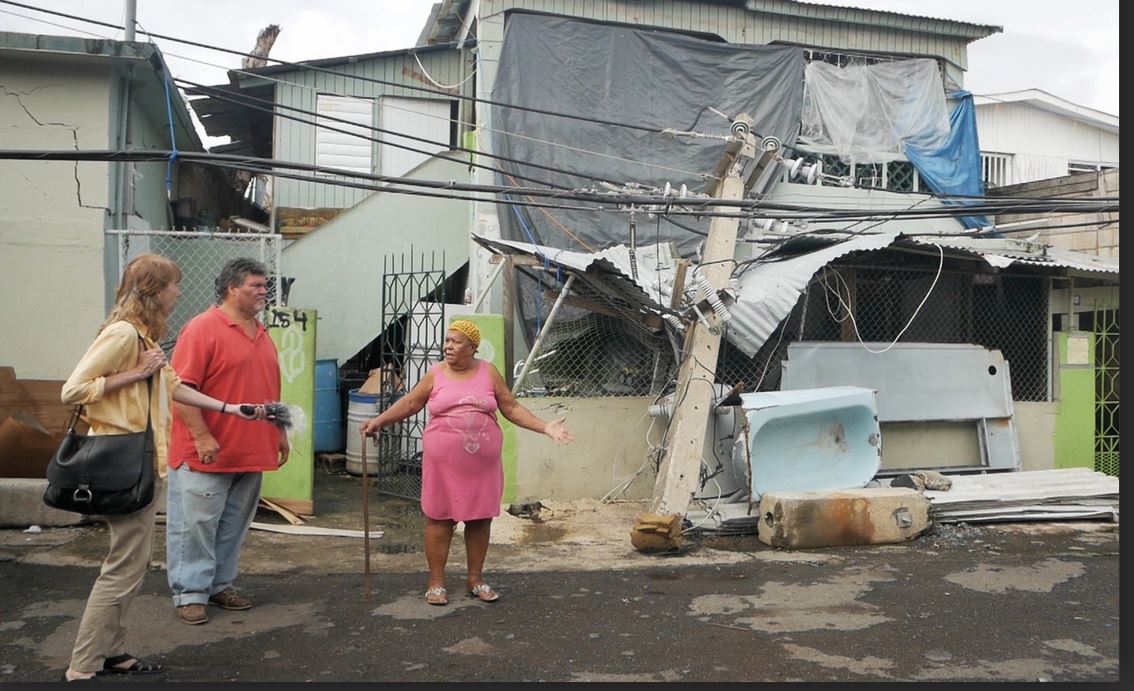
In the thick of things
To tell this story, Sandy and Roque traveled to Puerto Rico three times — once in January 2018, then in July 2018 and mid-April 2019.
The film schedule was tight. They did 90 percent of the work between the two of them and had just a little over four weeks total on the island. They lined up many meetings in advance, but sometimes, with a neighborhood representative or mayoral assistant, they knocked on doors in cities and rural villages to speak to people living in the dark.
“Even though it’s a modernized place, you encounter real poverty and the people who are struggling in the countryside,” Sandy says. “It’s a lot harder in rural communities where not many people are wealthy enough to even get a generator. You really see the divide.”
They interviewed a woman in the town of Ciales whose roof had been ripped off during the storm. Another man was taking care of an elderly family member in their dim house. They spoke to activists and researchers, the director of a consumer interest group, the vice president of a labor union. But the people who were in true positions of power, such as high-ranking PREPA employees or leaders in the Puerto Rican government, often didn’t return their calls. A senator from the Popular Democratic Party, Eduardo Bhatia, was the only official supporting the privatization of PREPA who agreed to an interview.
Roque worked as the director, cinematographer, editor, and audio technician. Handling jobs typically divided between different people, he felt a bit like a Swiss Army Knife, he says.
“It was actually very high pressure,” he explains. “For a typical undertaking for a documentary feature, you may spend months in a place, or be planning for over a year and laying groundwork and connections, then spending months there.”
Sandy acted as producer. She wrote the script and uncovered contacts and storylines, utilizing the skills she developed as a journalist. Thanks to the time spent working in Central America in the 1980s, she conducted some interviews in Spanish — an important skill since 95 percent of Puerto Ricans speak it day-to-day.
Since the film is geared toward mainland American audiences, most of the interviews were conducted in English. But the two are producing a version with Spanish subtitles in late summer.
Help came in the form of Velda Modestti, a Puerto Rican woman they met at an Airbnb on their first trip to the island. She initially gave them directions and general tips, but her experience in politics and connections to communities became indispensable. Modestti joined the project as an associate producer, helping set up interviews and interpreting for people when necessary.
Although paying witness to suffering was difficult, Roque and Sandy worked well together to overcome obstacles they encountered.
“It’s been a really good partnership. We complement each other in so many ways,” Sandy says. “He likes to tell good stories. I’m an investigator. And somehow we’ve made those things mesh.”
An educational tool
Sandy and Roque hope “DisemPOWERed” will find its home in the classroom. It’s an educational film, Roque says, not quite the thing that you’d sit down with on a Saturday afternoon. But it has the capacity to teach people about the blackout’s deeper issues in an engaging way.
A rough cut of the film was screened for commentary at an anthropology conference in San Juan in May, and the finished version had its world premiere before an audience of over 100 viewers at Pennsylvania State University in July. It will be screened at UNC and Duke University’s North Carolina Latin American Film Festival on October 26. The day prior, it will be shown in a UNC masterclass at 11:15 a.m. in 305 Dey Hall, followed by a panel with the filmmakers and scholars.
“DisemPOWERed” is not the first time a group from Carolina has traveled to Puerto Rico to investigate Hurricane Maria. In March 2018, 30 students and faculty from the UNC School of Media and Journalism visited the island to report on recovery efforts. Their project, “Aftermath,” offers the flip side of the coin; while “DisemPOWERed” examines the blackout’s root causes, “Aftermath” looks at the outcome.
Both projects aim to educate people about the territory’s energy and financial crisis.
“I hope that this film can help someone have more open ideas about the problems in Puerto Rico and the systemic long-term causes of them that are traced back to its colonial history,” Roque says. “There are lessons in the film that apply to the broader world.”
Sandy Smith-Nonini is an adjunct assistant professor in the Department of Anthropology within the UNC College of Arts & Sciences.
Roque Nonini is a photographer and filmmaker based in Brooklyn, New York. He holds a BFA in film and television production from the Savannah College of Art and Design and works as a freelance photographer and videographer.
Additional showings of “DisemPOWERed” will take place on October 16 at 7:30 p.m. at Community Church of Chapel Hill, sponsored by Balance & Accuracy in Journalism. Public attendees are welcome.
“DisemPOWERed” is available to non-profit environmental and community organizations working on related issues, and will be available in the future to educational institutions. To learn more about the film and view the trailer, visit www.disempoweredfilm.com. To sponsor a group showing, contact Sandy Smith-Nonini.
By Anne McDarris, Endeavors magazine

